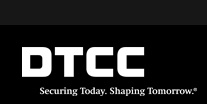We recently spoke with Murray Pozmanter, Managing Director of DTCC, about DTCC’s announcement of a repo blockchain project with Digital Asset Holdings. We wanted to know what this meant for market participants both financially and operationally. Here’s what we found.
The big opportunity for DTCC in moving to a blockchain settlement system for repo is netting. The more netting, the greater the ability of market participants to reduce their costs. Currently, some 70% of FICC (fixed income) trades are netted as compared to 97% of NSCC (equities) clearing activity. The reason for the much lower FICC number is the start leg of the repo. If transactions are settled outside of DTCC’s batch system then no netting can occur. The blockchain project is meant to increase the percentage of netted trades while providing immediate transparency to all market participants.
According to Pozmanter, “Currently, DTCC gets the trade and nets the off sides with other activity, but then the start leg gets settled bilaterally away from the clearinghouse. FICC is not part of the settlement chain.” That leg often gets settled on Fedwire (we wrote about this recently: “In blockchain for repo initiative, DTCC goes head-to-head against Fedwire securities settlement services.”) “The problem statement for the blockchain project is, how do we settle the start side of the trade and get it into the netting process?”
Outside of blockchain, DTCC is encouraging market participants to use more regular start dates, forwards and term trades instead of same day starts to improve netting. Anything besides a same day start can be netted, adding to DTCC’s efficiency.
More netting for FICC’s repo activity has a direct financial consequence for market participants. Netting lowers DTCC’s peak liquidity requirements, which means that FICC can safely provision a smaller liquidity facility and meet its financial requirements from Dodd-Frank, the Financial Stability Oversight Council and IOSCO’s Principles for Financial Market Infrastructures. In December 2015, the WSJ reported that DTCC was seeking US$50 billion in additional capital to support its repo clearing activity. That’s at the current level of 70% netted activity. If netting percentages move up substantially, then the US$50 billion figure could be reduced by as much as half.
Operationally, blockchain solves netting pain for market participants but does not add any new processes. “The first phase will include no real-time netting but DTCC will soon move to netting prior to the Fed’s opening. The distributed ledger will be available to clearing banks, IDBs and market participants so all books and records get updated simultaneously,” said Pozmanter. Market participants will still see the same file formats but will have better views into real-time position activity, and DTCC will still use its existing trade capture application.
How soon will all this happen? Pozmanter says that DTCC is hoping to launch a pilot project this summer and go into production in late 2017. “We will soon be able to bring up Digital Asset Holdings’ system in DTCC’s environment. The next step is to add business intelligence and smart contracts.”



1 Comment. Leave new
US treasury repo has historically traded almost exclusively as a CASH market. Moving any portion of that market to a TOM or SPOT convention presents significant challenges. As a rule repo markets trade with a settlement convention one day shorter that the underlying ‘cash’ market. The reason for this convention is one of practicality. The repo desk needs to know that the positions it is funding/covering reflect all of the activity of the cash traders. The US treasury ‘cash’ market has for decades settled for T+1. There is little reason to extend this settlement window as it would add risk to the financial system so if the US treasury repo market is to trade for TOM then repo traders will find themselves constantly funding/covering a shifting securities inventory. This, from a practical point of view makes an increasingly difficult market even harder to manage. Asset managers and agent lenders will also be challenged by a shift to TOM settlement.
The market certainly will benefit from a higher percentage of settlement netting but finding a way to implement this improvement without further complicating the job of a repo desk is a significant challenge.